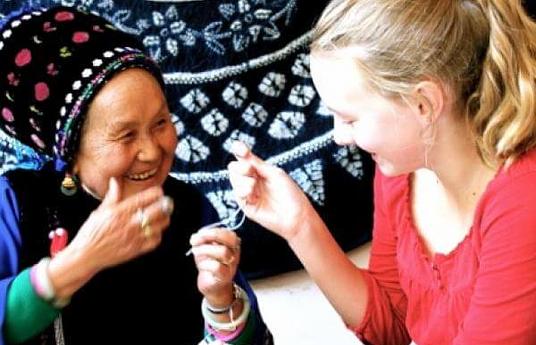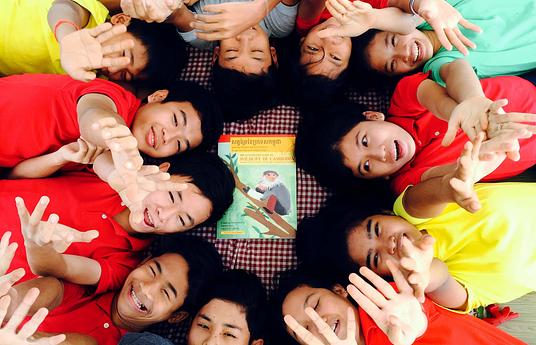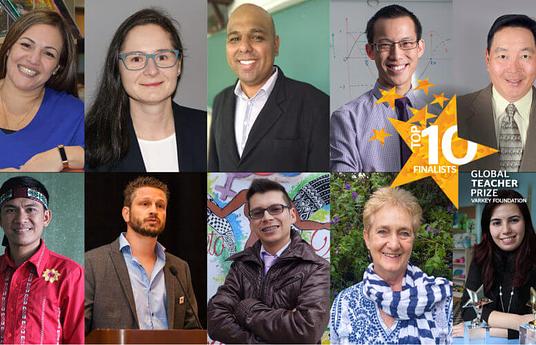Connections-based learning is one of the most useful tools a teacher has at their disposal, but many feel they don’t have the time to utilize it – or don’t realize that they could! We chatted to HundrED Ambassador and Global Teacher Finalist 2018, Barbara Zielonka, about how she uses connections-based learning in her classroom.
So what is connections-based learning?
‘Connections-based learning is a pedagogical approach where teachers connect their students to experts, communities and organizations so that they can learn from each other,’ explains Zielonka. ‘We live in the 21st century, and connections play a very important role in our lives. We need to take advantage of this connected world we live in. Connections-based learning gives my students real-world experience that cannot be recreated in any other way.’
Zielonka got involved in connections-based learning several years ago and hasn’t looked back since! The practice started as a way of doing something even more meaningful than project-based learning and to help motivate students by giving them real-world, authentic problems to solve.
Zielonka shared with us how she got going, ‘In the beginning, I talked to my friends and asked whether they knew someone who could present a short talk about topics we have discussed in class. These days I tend to reach out to speakers via social media networking sites – usually it is either Twitter or LinkedIn. Most of the people I contact are willing to be our guest speaker and it doesn’t take long to arrange an online session during which they give insight into their field and answer my students’ questions.’
Recent technologies like Skype and social media mean that our world is more connected than ever and can present amazing opportunities for education. By connecting students with experts from different fields we can create a network around students which helps them to understand how the world works and how to pursue meaningful careers and experiences.
We need to take advantage of this connected world we live in. Connections-based learning gives my students real-world experience that cannot be recreated in any other way.
"
The key to making an interactive session really meaningful is to follow an engaging structure for the lesson, as Zielonka explains, ‘During the first part of my lesson, I would usually present our guest speaker to my students. I then ask my students to do a quick google search to find some information about our speaker which is a fun and engaging way for my students to get actively involved in the 90-minute session. Students then sum up their findings and present them in pairs to the class. After this introductory part, I test Skype/ Google Hangouts to make sure we do not experience any technical issues during our session. If your school does not let you use Skype, I suggest that you use webroom or appear.in. These two one-click video conversations programmes are user-friendly and work well for classroom needs. When our guest is logged on, they give their talk for up to 30 minutes max. After the talk, students will have the chance to ask questions and connect with the speaker.’
Having a completely connected classroom has changed Zielonka’s teaching practices massively, as she explains, ‘Not only have my lessons become much more interesting and exciting, but I have also connected with entrepreneurs, volunteers, ICT experts and CEOs from all over the world. Connections-based learning has taught my students how easy it is to reach out to others using social media networking sites effectively and consciously. Learning in 2018 is no longer limited to the four walls of our classrooms. So let’s make the best use of all the digital tools and our connections!’
If you’re a total newbie to connections-based learning, Zielonka suggests, ‘observing classes where connections-based learning is already happening. Being able to see this approach in practice is a real eye-opener. However, if you do not have such an opportunity, I would probably suggest inviting your first guest speaker and checking whether it is something your students would love to do.’ For further reading on the subject, Zielonka recommends Sean Robinson’s book Connections-Based Learning - A Framework for Teaching and Learning in a Connected World.
Zielonka’s inspirational work has been recognized by the Global Teacher Prize, in which she was shortlisted to the final 10. She is also a part of HundrED’s Ambassador scheme, which she joined in order ‘to be a part of a global community where people share their innovations and work together towards a common goal.’
We’re so glad that we have Zielonka onboard at team HundrED and that she’ll be representing us as an Ambassador. If you too share our passion for education, get involved by applying to be an Ambassador and if you’re excited to get going with connections-based learning, check out Education Cities, Liger Leadership Academy or Microcampus – all of which make the most of connections-based learning.
Barbara Zielonka’s Favourite HundrED 2017 Innovations:
1. OneCourse/OneBillion - ‘Nothing in education is more important than reading, it opens the window to the world and we need to decrease the numbers of kids who are illiterate.’
2. GreenBronxMachine - ‘This project is really hands-on and helps grow organic citizens.’
3. Student Agents - ‘Empowering students is dear to my heart as I believe it lets students take ownership of their learning/digital transformation is still a buzzword in many schools but if we involve students, we might make it happen at our schools.’




